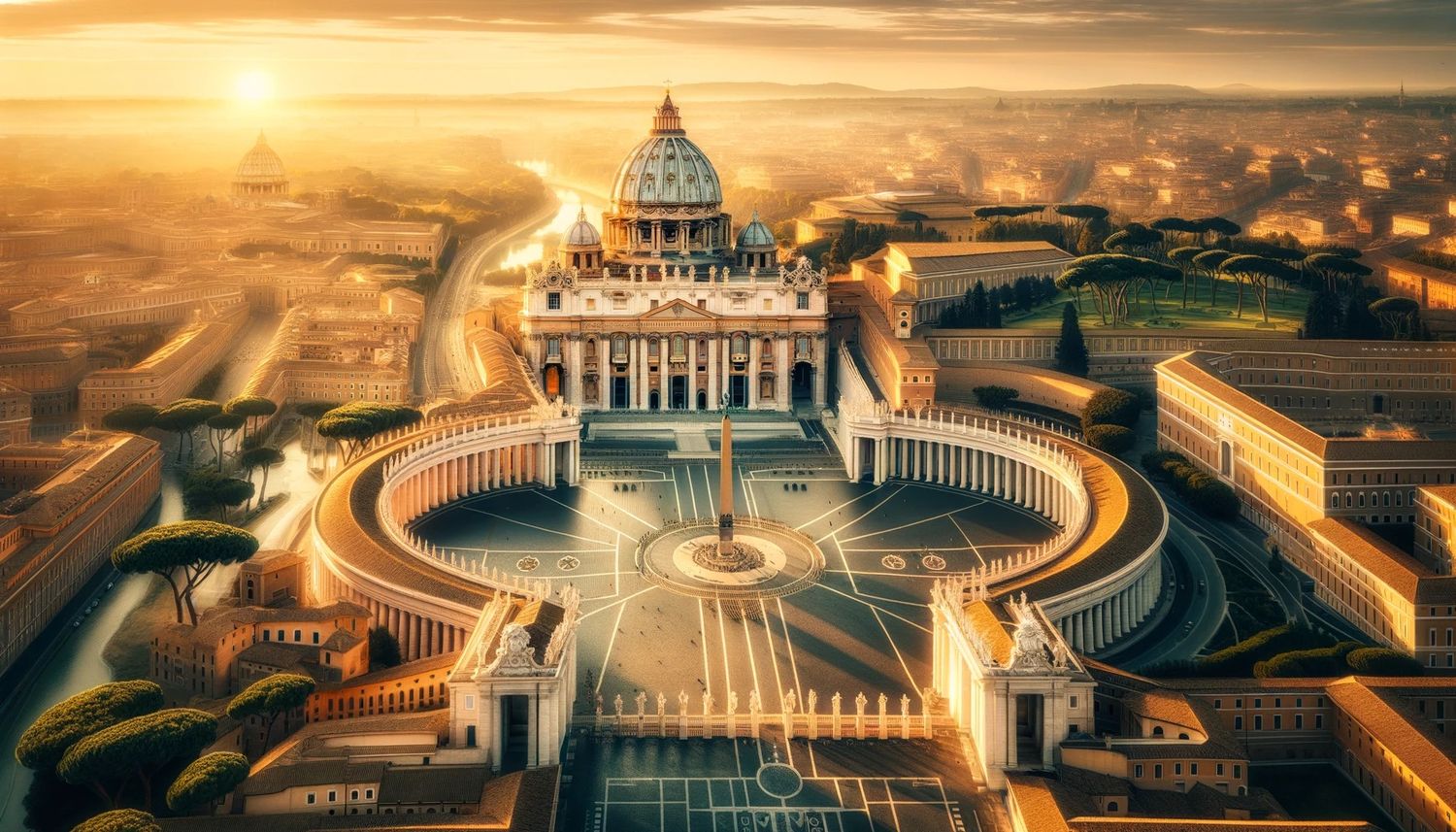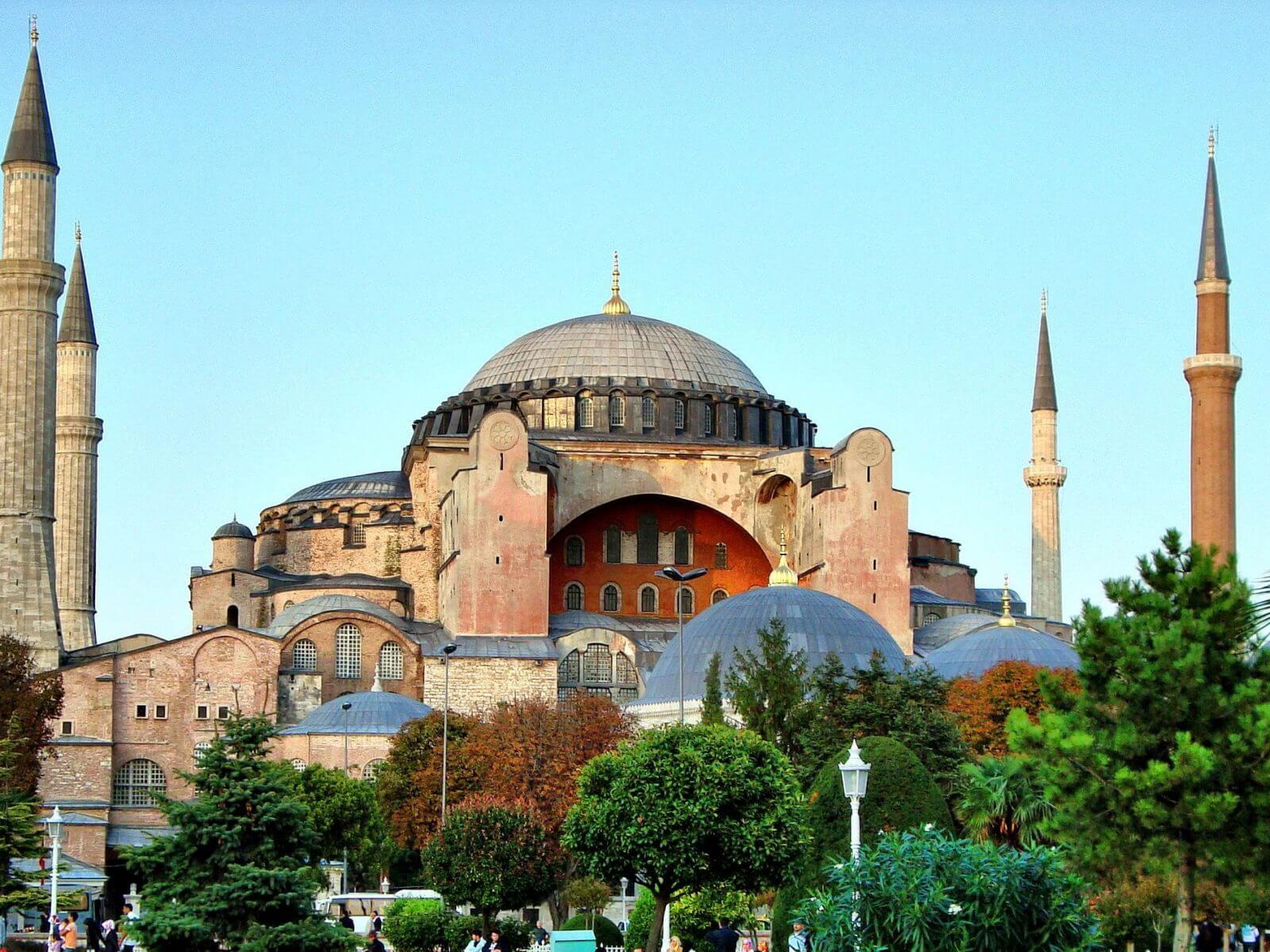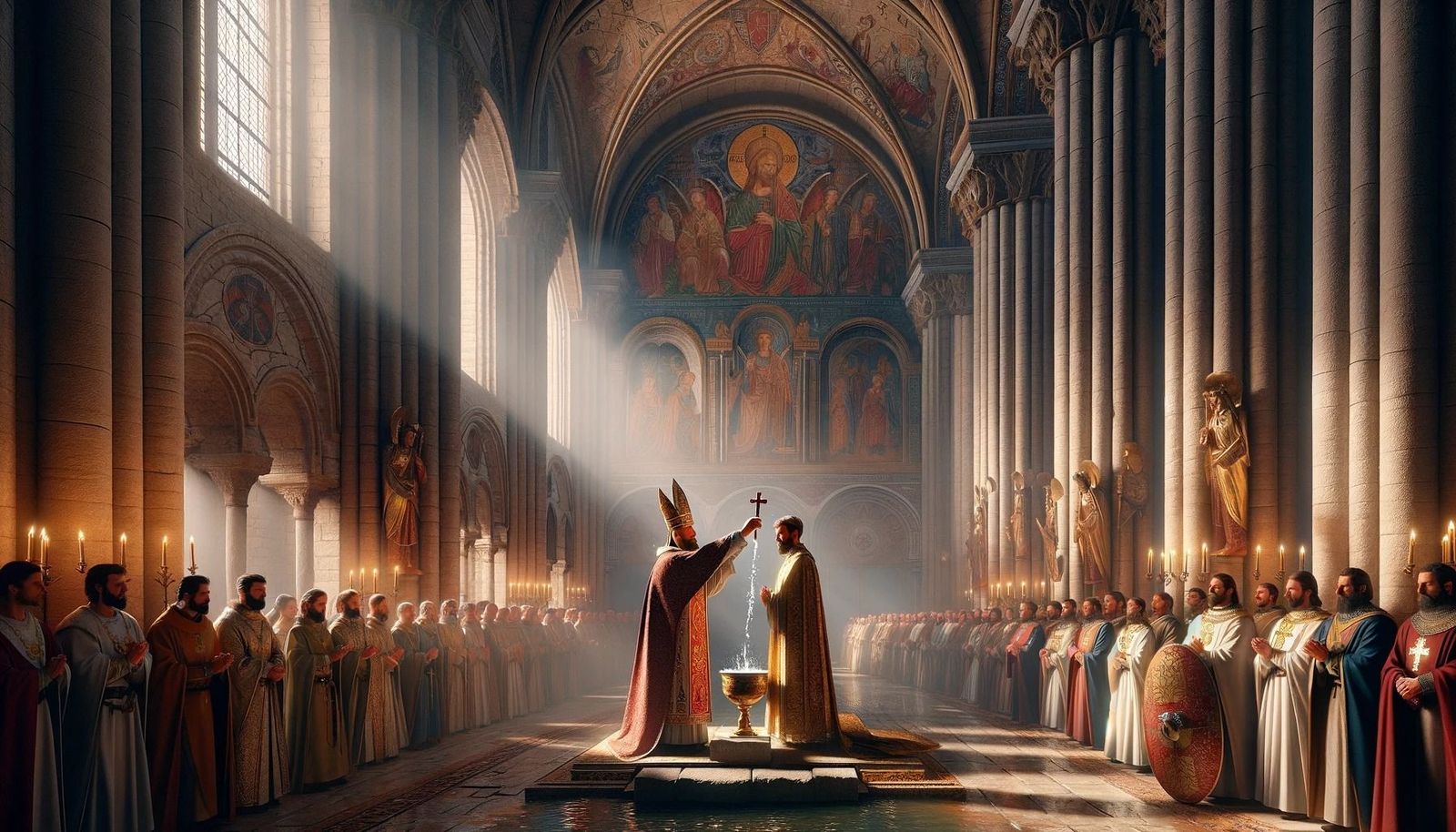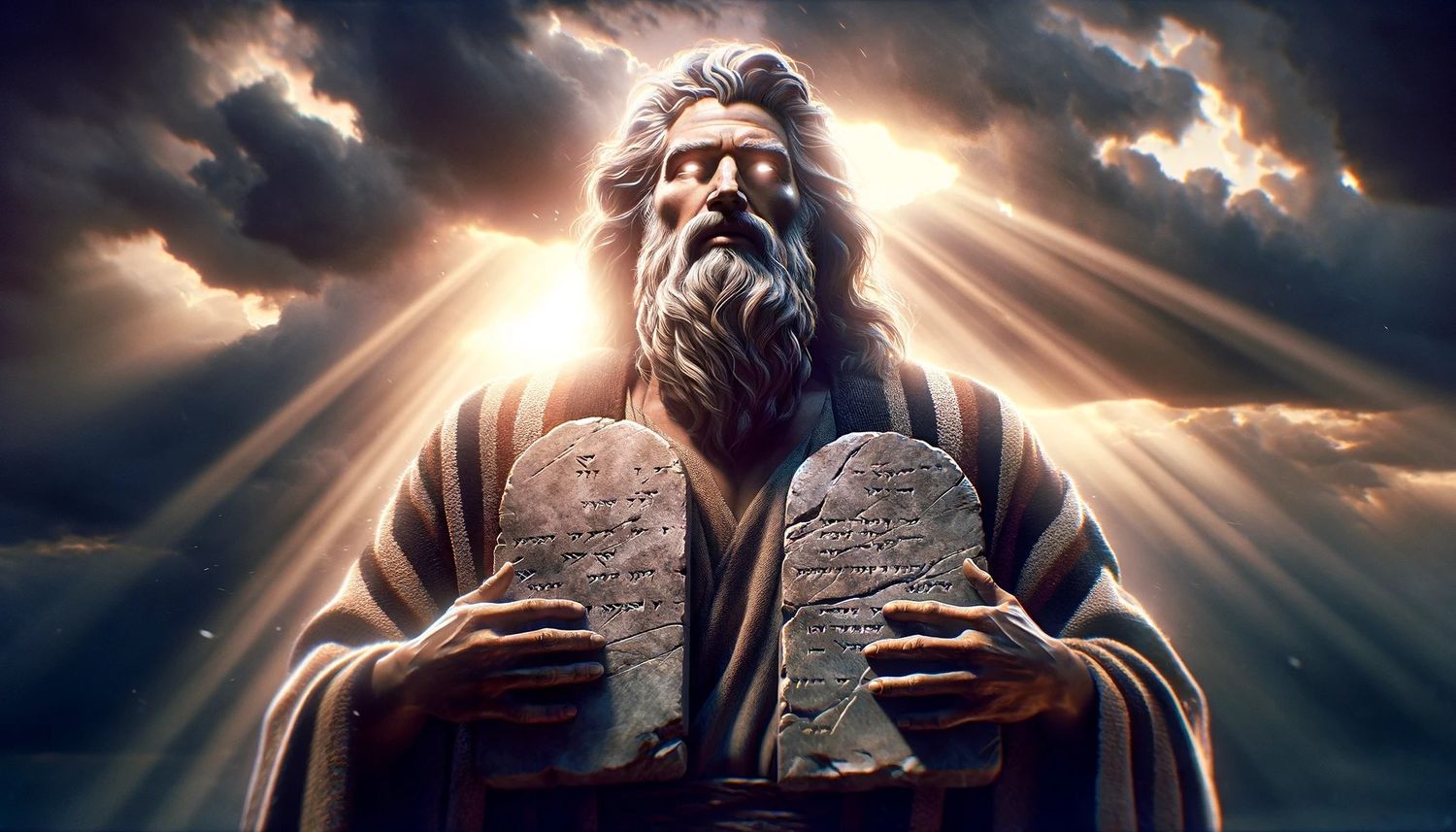Home>Theology and Spirituality>Who Made Catholicism The Official Religion Of The Roman Empire


Theology and Spirituality
Who Made Catholicism The Official Religion Of The Roman Empire
Published: February 17, 2024
Peter Smith, Editorial Director at Christian.net, combines deep insights into faith, politics, and culture to lead content creation that resonates widely. Awarded for his contributions to religious discourse, he previously headed a major organization for religious communicators, enhancing dialogue on faith's societal impacts.
Discover the history behind the official adoption of Catholicism in the Roman Empire and its impact on theology and spirituality. Explore the significance of this pivotal moment in religious history.
(Many of the links in this article redirect to a specific reviewed product. Your purchase of these products through affiliate links helps to generate commission for Christian.net, at no extra cost. Learn more)
Table of Contents
Introduction
The journey of Catholicism as the official religion of the Roman Empire is a fascinating tale that intertwines faith, politics, and history. It is a story of profound significance, marking a pivotal moment in the development of Christianity and its relationship with the Roman state. Understanding the events that led to the establishment of Catholicism as the official religion provides valuable insights into the dynamics of power, belief, and cultural transformation in the ancient world.
The rise of Catholicism as the dominant faith in the Roman Empire is a testament to the enduring influence of religious movements on the course of human civilization. It reflects the profound impact of spiritual beliefs on the social, political, and cultural fabric of societies. Exploring this historical narrative allows us to delve into the complexities of religious pluralism, statecraft, and the quest for religious unity within the Roman Empire.
As we embark on this exploration, we will journey through the pivotal moments and key figures that shaped the trajectory of Catholicism within the Roman Empire. From the early days of Christian persecution to the transformative reign of Emperor Constantine the Great, the narrative unfolds with a tapestry of religious fervor, imperial decrees, and theological debates. It is a saga that illuminates the interplay between faith and governance, shedding light on the profound transformations that unfolded within the Roman Empire.
The story of how Catholicism became the official religion of the Roman Empire is a testament to the enduring legacy of faith and the intricate interweaving of religious and political forces. It is a tale that continues to resonate through the annals of history, offering profound insights into the evolution of Christianity and its enduring impact on the world. Join us as we embark on this captivating journey through the corridors of time, unraveling the intricate tapestry of events that culminated in the establishment of Catholicism as the official religion of the Roman Empire.
Read more: Who Restored England To Roman Catholicism?
The Rise of Christianity in the Roman Empire
The rise of Christianity in the Roman Empire marks a pivotal chapter in the annals of religious history. Emerging from humble beginnings in the eastern provinces of the empire, Christianity gradually gained traction, captivating the hearts and minds of diverse communities across the Mediterranean world. The early followers of this faith, inspired by the teachings of Jesus Christ, navigated a landscape fraught with religious diversity and imperial authority.
Amidst the polytheistic tapestry of Roman religious life, Christianity stood out as a monotheistic faith, emphasizing the worship of a single deity. This stark contrast sparked both curiosity and suspicion among the Roman populace and authorities. The teachings of love, compassion, and spiritual redemption espoused by early Christian communities resonated deeply with individuals seeking solace in a world rife with social upheaval and existential uncertainty.
However, the burgeoning influence of Christianity also encountered resistance, as it diverged from the traditional religious practices sanctioned by the Roman state. The steadfast refusal of Christians to partake in the veneration of Roman deities and the imperial cult led to sporadic bouts of persecution, as they were viewed as dissenters challenging the established order.
Despite these challenges, the message of Christianity continued to spread, fostering vibrant communities that transcended social boundaries. The catacombs beneath the city of Rome bore witness to clandestine gatherings of believers, where faith served as a source of resilience and solidarity in the face of adversity.
The martyrdom of early Christian figures, such as Saint Peter and Saint Paul, became emblematic of the unwavering commitment to their beliefs, inspiring subsequent generations to uphold the tenets of their faith. The resilience and steadfastness displayed by these early Christians in the face of persecution contributed to the gradual permeation of Christianity throughout the fabric of Roman society.
As the influence of Christianity continued to expand, it intersected with the broader currents of Roman cultural and political life, setting the stage for a transformative era that would redefine the religious landscape of the empire. The rise of Christianity within the Roman Empire laid the groundwork for a profound realignment of spiritual allegiances, culminating in a series of pivotal events that would shape the course of history.
This period of burgeoning faith and cultural evolution set the stage for the momentous developments that would ultimately lead to the establishment of Catholicism as the official religion of the Roman Empire. The journey of Christianity within the Roman Empire serves as a testament to the enduring power of faith and the indelible impact of belief systems on the tapestry of human history.
Constantine the Great and the Edict of Milan
The pivotal reign of Emperor Constantine the Great heralded a transformative era in the history of Christianity and the Roman Empire. Constantine, renowned for his military prowess and strategic acumen, ascended to the imperial throne at a time of profound societal upheaval and religious ferment. His ascent to power marked a turning point in the trajectory of Christianity within the Roman Empire, as his reign witnessed a series of monumental developments that would reshape the religious landscape of the ancient world.
Amidst the backdrop of internal strife and external threats, Constantine emerged as a unifying figure, seeking to consolidate his authority and foster stability within the empire. His encounter with the symbol of the Chi-Rho, a Christian emblem, prior to a pivotal military campaign, is enshrined in historical lore as a defining moment that influenced his perception of Christianity. This encounter is believed to have instilled in Constantine a sense of divine favor and led him to embrace the Christian faith.
In the year 313 AD, Constantine, along with his co-emperor Licinius, issued the Edict of Milan, a landmark decree that signaled a paradigm shift in the Roman Empire's approach to religious tolerance. The edict, characterized by its spirit of religious freedom, granted Christians and individuals of other faiths the liberty to practice their beliefs without fear of persecution. This monumental proclamation represented a departure from the previous policies of sporadic persecution and marked a significant stride towards religious pluralism within the empire.
The Edict of Milan not only symbolized a watershed moment in the history of religious freedom but also reflected Constantine's astute political acumen. By extending protection to Christians and promoting religious tolerance, Constantine sought to foster unity and stability within the empire, recognizing the potential of Christianity as a unifying force. The edict served as a catalyst for the burgeoning influence of Christianity, paving the way for the faith to emerge from the shadows of persecution and assume a prominent role in the public sphere.
Constantine's patronage of Christianity and his efforts to reconcile diverse religious communities laid the groundwork for a new chapter in the relationship between the Roman state and the Christian faith. His patronage of monumental Christian constructions, such as the Church of the Holy Sepulchre in Jerusalem, underscored his commitment to advancing the cause of Christianity within the empire.
The reign of Constantine the Great and the issuance of the Edict of Milan stand as a testament to the profound impact of visionary leadership on the course of religious history. This pivotal juncture set the stage for the subsequent developments that would culminate in the establishment of Catholicism as the official religion of the Roman Empire, marking a transformative epoch in the annals of Christianity and the ancient world.
The Council of Nicaea and the Nicene Creed
The Council of Nicaea convened in the year 325 AD, marking a watershed moment in the history of Christianity and the Roman Empire. Convened by Emperor Constantine the Great, the council brought together hundreds of bishops from across the Christian world to deliberate on crucial theological matters and doctrinal disputes that had arisen within the burgeoning Christian community.
At the heart of the council's deliberations was the contentious issue of Arianism, a theological doctrine propagated by the presbyter Arius, which challenged the orthodox understanding of the relationship between God the Father and Jesus Christ. The doctrine posited that Jesus, the Son, was a created being and therefore distinct from the eternal nature of God the Father. This theological schism engendered profound discord within the Christian community, threatening to fracture the unity of the faith.
Amidst fervent debates and impassioned discourse, the council sought to reconcile these doctrinal divisions and articulate a unified understanding of Christian belief. The deliberations culminated in the formulation of the Nicene Creed, a seminal statement of faith that articulated the orthodox Christian understanding of the nature of the Trinity and the divinity of Christ.
The Nicene Creed, crafted through meticulous theological discourse and consensus-building, affirmed the eternal co-existence and co-equality of the Father and the Son, asserting the divinity of Christ as consubstantial with the Father. This doctrinal formulation served as a cornerstone of Christian orthodoxy, providing a unifying framework for the diverse Christian communities scattered across the Roman Empire.
The council's affirmation of the Nicene Creed not only addressed the immediate theological controversies but also laid the groundwork for a cohesive theological foundation that would shape the trajectory of Christian belief for centuries to come. The Nicene Creed, with its affirmation of the triune nature of God and the divinity of Christ, emerged as a defining statement of Christian faith, transcending doctrinal disputes and fostering a sense of theological unity within the Christian world.
The Council of Nicaea and the formulation of the Nicene Creed stand as a testament to the enduring significance of theological dialogue and consensus-building within the Christian tradition. The council's deliberations not only navigated the complexities of doctrinal disputes but also underscored the profound interplay between faith, governance, and the quest for theological unity within the Roman Empire. This pivotal moment in Christian history laid the groundwork for the subsequent developments that would culminate in the establishment of Catholicism as the official religion of the Roman Empire, leaving an indelible imprint on the annals of religious history.
The Edict of Thessalonica and the Establishment of Catholicism as the Official Religion
The Edict of Thessalonica, also known as the "Edict of Cunctos populos," represents a defining moment in the history of Christianity and the Roman Empire. Issued in 380 AD by Emperor Theodosius I, along with co-emperors Gratian and Valentinian II, this monumental decree elevated Catholicism to the status of the official state religion, marking a transformative juncture in the relationship between the Roman state and the Christian faith.
The edict, characterized by its resolute affirmation of Nicene Christianity, mandated that all the inhabitants of the Roman Empire adhere to the faith proclaimed by the Apostle Peter, emphasizing the primacy of the Catholic Church. This decisive proclamation not only solidified the position of Catholicism within the religious landscape of the empire but also heralded a new era of state-sponsored Christian orthodoxy.
The Edict of Thessalonica represented a culmination of the trajectory set in motion by Emperor Constantine's patronage of Christianity and the Nicene Council's formulation of the Nicene Creed. By enshrining Catholicism as the official religion, the edict signaled a departure from the previous era of religious pluralism and marked a definitive shift towards the institutionalization of a singular Christian faith within the Roman Empire.
Theodosius I, a devout adherent of Nicene Christianity, sought to consolidate the unity of the empire under the banner of Catholic orthodoxy, viewing religious homogeneity as essential for the stability and cohesion of the realm. The edict not only conferred legal privileges upon the Catholic Church but also curtailed the influence of other religious traditions, signaling a paradigm shift in the state's approach to religious governance.
The establishment of Catholicism as the official religion through the Edict of Thessalonica ushered in an epoch characterized by the intertwining of religious authority and imperial power. The Catholic Church, endowed with newfound prominence and imperial favor, assumed a central role in shaping the moral and social fabric of the Roman world, exerting influence over matters of governance, education, and public morality.
The edict's far-reaching implications reverberated across the Roman Empire, laying the groundwork for the enduring symbiosis between Catholicism and the imperial apparatus. It set the stage for the institutionalization of the church's authority and the promulgation of Christian doctrine as the guiding ethos of the empire, leaving an indelible imprint on the course of Western civilization.
The Edict of Thessalonica stands as a testament to the profound interplay between faith and governance, underscoring the enduring impact of religious institutions on the trajectory of human history. This pivotal decree not only solidified the ascendancy of Catholicism within the Roman Empire but also heralded a new chapter in the evolution of Christianity as a defining force in the shaping of Western civilization.
Conclusion
The journey of Catholicism as the official religion of the Roman Empire encapsulates a tapestry of pivotal moments, visionary leadership, and theological consensus that reshaped the course of religious history. From its humble origins amidst persecution to its elevation as the state-sanctioned faith, Catholicism's trajectory within the Roman Empire reflects the enduring interplay between faith, governance, and cultural transformation.
The rise of Christianity within the Roman Empire, marked by steadfast resilience and unwavering commitment, laid the groundwork for the transformative developments that unfolded under the patronage of Emperor Constantine the Great. His visionary leadership, exemplified by the Edict of Milan, heralded a new era of religious tolerance, fostering an environment conducive to the flourishing of Christian communities and the consolidation of their influence.
The Council of Nicaea, convened under the auspices of Constantine, stands as a testament to the power of theological dialogue and consensus-building. The formulation of the Nicene Creed not only addressed doctrinal disputes but also provided a unifying framework for the diverse Christian communities, fostering a sense of theological cohesion amidst diversity.
The culmination of this trajectory manifested in the Edict of Thessalonica, a definitive proclamation that elevated Catholicism to the status of the official state religion. Emperor Theodosius I's resolute affirmation of Nicene Christianity solidified the position of Catholicism within the religious landscape, ushering in an era characterized by the intertwining of religious authority and imperial power.
The establishment of Catholicism as the official religion of the Roman Empire represented a paradigm shift, shaping the moral, social, and political fabric of the ancient world. The enduring legacy of this pivotal juncture reverberates through the annals of history, underscoring the profound impact of faith on the trajectory of human civilization.
The journey of Catholicism within the Roman Empire serves as a testament to the enduring influence of religious movements and the intricate interplay between faith and governance. It stands as a testament to the enduring legacy of faith and the profound impact of belief systems on the tapestry of human history. The establishment of Catholicism as the official religion of the Roman Empire represents a pivotal moment in the evolution of Christianity and its enduring impact on the world.














